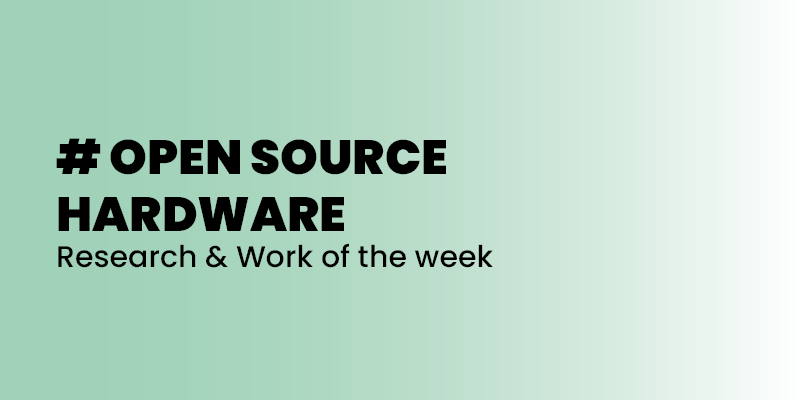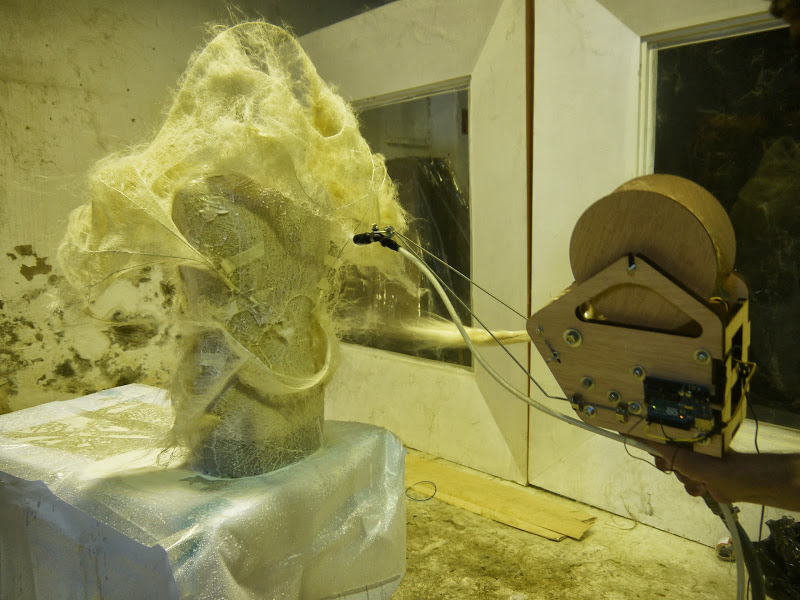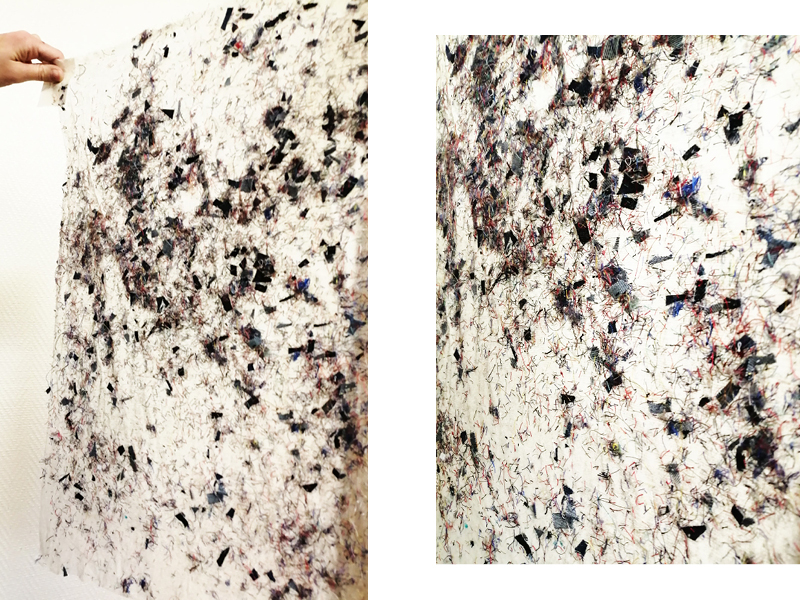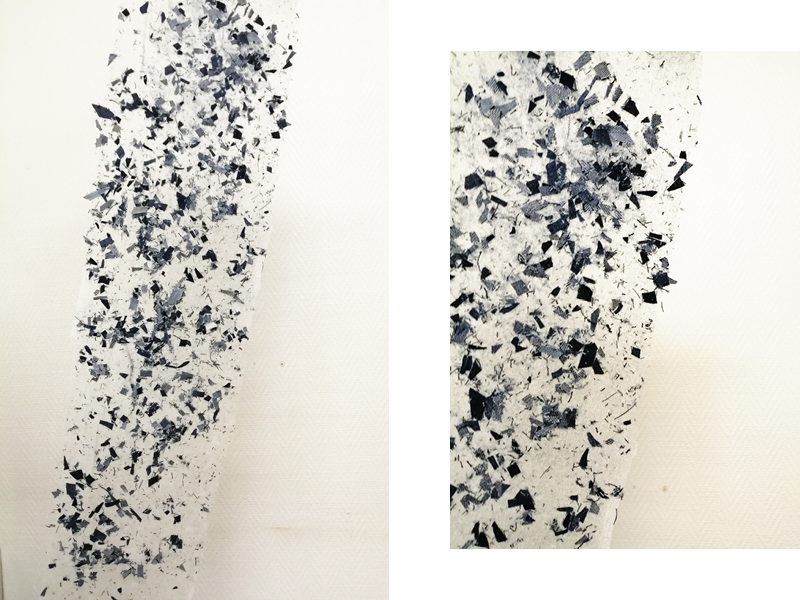10. Open Source Hardware - From Fibers to Fabric¶

This week it was the "Open Source Hardware - From Fibers to Fabric" class !
The class explores the open source hardware field in general and focuses on its potential in the area of textile. How to update obsolete machines for producing textile? How to take advantage of digital fabrication and open source technology to come up with an open source machine for knitting, weaving and invent new techniques.
This class focuses on the importance of the techniques, tools and machines that create traditional fabrics.
It was very interesting to question our tools around the faber and frabric theme. It is very important to understand our tools, how them works, to know how can we repair them for exemple. But also, to create new tools.
▼ During the lecture of the week, i found this work very funny and intersting ! ▼
Textile drawing machine¶
The textile drawing machine is the fabricademy final project of Pauline Gamore. She presented it the wednesday.

She added a shildramps (usely used for CNC machines) on an arduino hardware to program. The shildramps is like an arm and arduino is the processor. The machine move on three axes (X,Y,X) as a CNC or a 3D printing. On this machine there are micro processors on each axes.
To develop a pattern with her machine, she used the Processing software. This software allows to generate easly a print pattern with codes. The interface is similar to Arduino interface, but with two windows (Window 1 : pattern code - Window 2 : "package"). Also, there is a white window which communicates and which alows to translate the code visually. The pattern created by Processing is vectorial.
Save : Different saving are possible with Processing. We can save the file in : jpeg, GCode,...
In parallel, she uploaded "MARLIN", the language code of the machine. This language is an Arduino sketch already written for the machine, it allows to inform and set up the machnie. To use MARLIN, it is necessary to open it on arduino interface. MARLIN is an open source code provides with the open source machine.
PRONTERFACE : And then, to controle the machine and communicate with it, she open Pronterface, the communication interface. She connected the machine with this interface and she can add a GCode on it.
On Open Builds we can find many tools to create our open source machine.
GCodeTools (link soon) is a tools to convert a SVG file in Gcode file.
During this presentation, I learned what is the MIT : Massachusetts Institute of Technology, "the fablabs centre".
Massachusetts Institute of Technology (MIT) is a private land-grant research university in Cambridge, Massachusetts. Established in 1861, MIT has since played a key role in the development of modern technology and science and has been ranked among the top academic institutions in the world.
It is in this place that was created Processing software.
Also, during the week 7 we saw the Neri Oxman work and its beautiful design parametric masks. This designer studied at MIT.
Then, the same day, with Lucia, we decided to work on a fiber gun. To start we researched some documentation on this tool, to find processes of fabrication and inspiration.
Hilo and loom¶
At the same time two other TextileLab teams decided to work on other tools.
▸ Capucine, Marie-Charlotte, Laetitia and Charlotte worked on Hilo, a spinning machine proposed in open source by Studio Hilo.
Their beautiful documentations :
▹ Marie-Charlotte documentation
▸ Louise, Ségolène and Surzhana decided to build a weaving loom.
Their beautiful documentations :
▹ Segolene documentation
▹ Louise documentation
Inspiration¶
Fiber spray :
 Fiber spray designed by Jean Akanish, Jin Shihui, Alexander Dolan and Ali Yerdel.
Fiber spray designed by Jean Akanish, Jin Shihui, Alexander Dolan and Ali Yerdel.
Fibrer dress with fiber spray :
BioGun :
 BioGun
BioGun
Biomaterial extruder : Biomaterial extruder by fabricademy alumni
Work of the week¶
After a long time of research and inspiriting we discovered that there was not much informations. So, we decided to follow our inspirations and our creative intuition.
To stard, we tried to hybride the compressed air gun with a plastic bottle. The plastic bottle that we made, was add on the gun and it allowed to contain fiber.
Construction process
- To add the bottle on thecompressed air gun you need *a plastic bottle".
- Cut it in length in 3 part.
- Delete the middle part and keed the butt and the head of the bottle.
- Made a hole on the butt of the bottle the size of the tip of the gun.
- Pass the tip of the gun in the hole of the butt of the bottle and assemble with adhesive. It's important to close and assemble well between the gun and the bottle to keep the air inside the bottle.
- The butt of the buttle is the contain fiber. Put fibers inside and close this new gun with the top of the bottle.
The compressed air gun + the new tools add on its allowed to push fibers on a surface.
We experimented different fibers and different preparations to fix on a surface.
First, we tried to blow fiber only, to see if this hybridation operate.
Then, we tried to add alginate preparation in our tool but it fail. The alginate was to dense and heavy to be blow. Well, we decided to add fibers only, in this tools and to find a glue recipe to add in same time, in parrallel of the fibers blow.
Glue recipe :
70% Ethanol + 30% natural resine
We add this glue on our surface and we blew differents fibers on this surface.
If we want more away, we would have a pump with glue inside to blow the glue in same time as fibers on a surface, as the fiber gun, in inspirations.
How to reproduce it¶


Video of the machine¶
Final outcome¶


